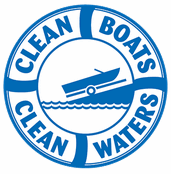
Lake Redstone Protection District

Invasive snail found in two new streams
Contacts: Kyle Mosel – Statewide AIS Response Coordinator, 608-266-0502
Susan Graham – AIS Regional Coordinator, 608-275-3329
Anglers encouraged to take steps to prevent further spread
MADISON – New Zealand mudsnails, an invasive snail, have recently been verified in two new streams in Dane County. The Wisconsin Department of Natural Resources is asking anglers to help prevent the spread of this organism to other waterbodies.
Brewery Creek is a tributary to Black Earth Creek and is located in Cross Plains. The furthest upstream verified sites were roughly 0.6 miles upstream from the confluence with Black Earth Creek. New Zealand mudsnails were first confirmed in Black Earth Creek in the fall of 2013. Oregon Branch of Badfish Creek is located just East of Oregon. This site is the first confirmed infestation of the mudsnail in the Rock River Watershed.
These findings now make six known inland streams with populations of these invasive snails. All six streams are in either Dane or Columbia counties. The New Zealand mudsnail is an NR40 prohibited invasive species, meaning that this species has the potential to cause harm to the environment, human health, or the economy. The small snail can outcompete native stream insects that serve as food for fish, possibly depriving some fish of their preferred food. However, it is uncertain what impacts this invasive species will have on Wisconsin streams.
All water users play an important role in preventing the spread of the New Zealand mudsnail. Anyone can help prevent the spread of invasive species by following the Stop Aquatic Hitchhikers guidance of:
-
INSPECT your equipment, which includes boots, waders, nets, fishing gear, boat livewells, boat hulls, and trailers
-
REMOVE any attached mud, aquatic plants or animals from equipment
-
DRAIN all water from boats and equipment; and
-
NEVER MOVE live fish away from a waterbody.
Due to the tiny size, “stickiness” to boots and other surfaces, and their ability to survive out of water for a long time, special precautions need to be taken to prevent transferring the mudsnail to new waters. Therefore, people who wade streams for any reason are strongly encouraged to use a brush to scrub their boots and waders to prevent transporting New Zealand mudsnails. Boot brushes are sometimes available for use at kiosks at popular trout fishing access points. Equipment can also be thoroughly rinsed with tap water after scrubbing but only away from any streams or waterbodies. Freezing gear for at least eight hours will also further reduce the risk of transporting New Zealand mudsnails to other streams. By using these prevention strategies, water users can help protect our fisheries and stop the spread of invasive species.

Photo Courtesy of Wisconsin DNR

The Clean Boats, Clean Waters watercraft inspection program is an opportunity to take a front line defense against the spread of aquatic invasive species. With the growing concern over the spread of aquatic invasive species to Wisconsin’s inland lakes, many lake association members and other concerned citizens are looking for ways to get involved. Through the Clean Boats, Clean Waters program, inspectors are trained to organize and conduct a boater education program in their community. Adults and youth teams educate boaters on how and where invasive species are most likely to hitch a ride into water bodies. Inspectors perform boat and trailer checks for invasive species, distribute informational brochures and collect and report any new water body infestations.
Lake Redstone Protection District is looking for a talented person to head up our program. If you know anyone or would like to head up the paid postion for CBCW program please conact any board member on the Board Member Page.